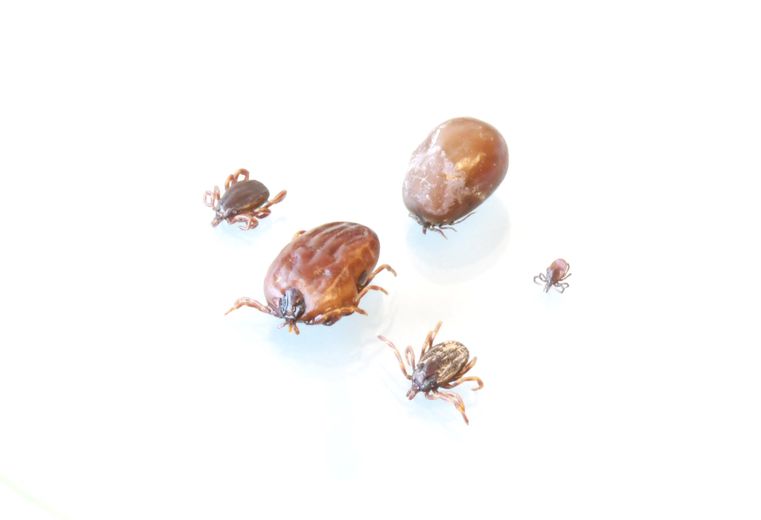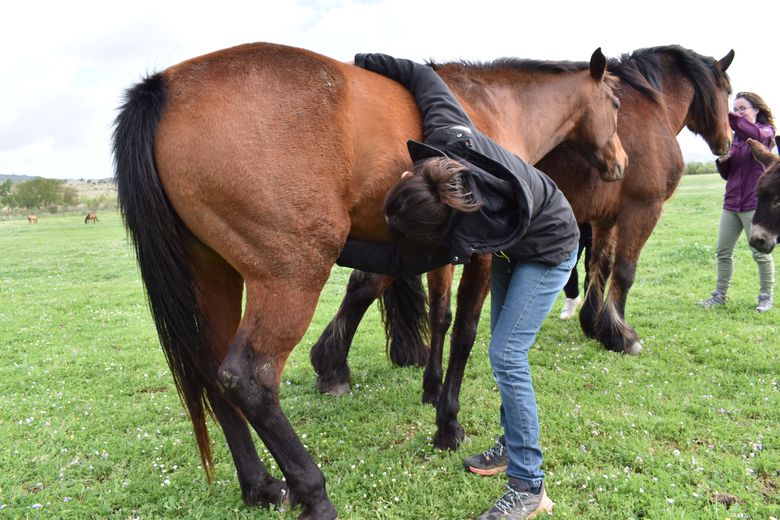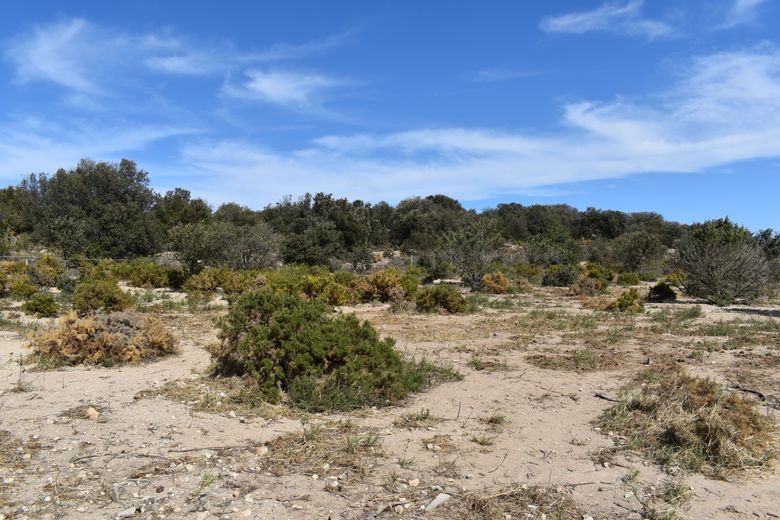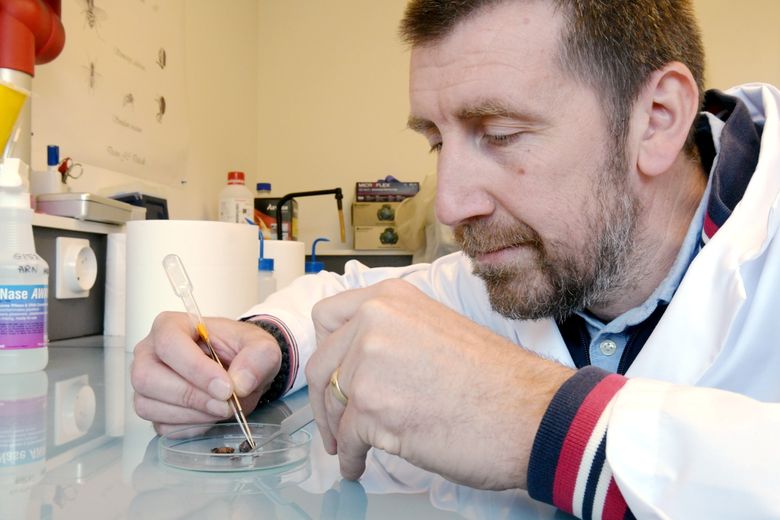Driven by global warming, the “giant tick” is colonizing Occitania: INRAE and CIRAD are monitoring the situation

Une tique à pattes rayées prélevée dans un élevage le 22 avril. DR MAXIMILIAN BARBIER
Nearly ten years after a first report in Occitania, Hyalomma marginatum, the “striped-legged” tick, also called “giant tick”, is settling in the region. Scientists from CIRAD and INRAE have been tracking it on farms for several weeks to measure the phenomenon. With new data: since the report of parasites carrying the Crimean-Congo hemorrhagic fever virus, last year, in the Pyrénées-Orientales, the disease, endemic in Africa, Asia, and the Middle -East, could appear in France.
It is large (8 mm), is armed with a spur, a "rostrum" for the scientists who study it, is carried by two-colored legs decorated with whitish rings at the joints, lives in scrubland on the Mediterranean coast. Montpellier researchers are following her trail. Last October, for the first time in France, the Crimean-Congo Hemorrhagic Fever (CCHF) virus was detected in specimens of Hyalomma marginatum, the "striped-legged tick". The mites had been collected from cows and horses in the Pyrénées-Orientales.
If no cases of transmission to humans are documented, the condition, similar to Ebola, is potentially serious.

Hyalomma marginatum, the “striped legged ticks”, on the front line. Behind, Ixodes ricinus. MICHAEL ESDOURRUBAILH – MICHAEL ESDOURRUBAILH
For several weeks, scientists from Cirad and Inrae and the University of Montpellier have returned to the field: in search of Hyalomma marginatum , but also Ixodes ricinus, another species of ticks rather present in the north and west of the region, which transmits Lyme disease, " ;we do not find it in Hérault, nor Gard, nor Aude or the Pyrénées-Orientales", specifies Thierry Pollet, epidemiologist researcher attached to Inrae, associated with Cirad and the ASTRE mixed research unit at the University of Montpellier in the "Vectors" collective, since its laboratory on the Baillarguet campus, north of Montpellier.

Ticks are always spotted in the same place on the animal: mane, udders, etc. DR MAXIMILIAN BARBIER
On the other hand, the teams track Dermacentor marginatus, a vector of animal diseases, notably equine piroplasmosis, which exhausts and, sometimes, kills the infected animal.
"Ticks collected from horse and cattle breeders are being analyzed"< /em>, indicates the scientist. Spring is the most favorable season for observations: "This is when ticks come into activity, the missions continue until July August".
"We talk a lot about mosquitoes, but ticks are also a public health problem"
Will the samples confirm the circulation of the FHCC virus in France ? Monitored since 2015 by a CIRAD team, in Montpellier, the evolution of the population of worried ticks: "It poses serious risks to both human and animal health", indicates the research institute.

Ticks engorged with blood on a farm inspected in Occitanie Ouest, on April 22. DR MAXIMILIAN BARBIER
Beyond Lyme borreliosis, the best-known tick-borne disease cited by 8 out of 10 French people, which affected 47,000 people in France in 2021 according to Public Health France.
A “hunting” tick
Ticks develop in three phases, from larva to adult. from the adult to the nymph. Once engorged with blood, the tick can multiply its weight until it reaches its size. 100, whatever the species: Ixodes ricinus, Hyalomma marginatum, Dermacentor marginatus… and the classic dog tick, Rhipicephalus sanguineus.
To find a host, the parasite has several strategies. Ixodes ricinus, explains Thierry Pollet, "is à on the lookout, on a twig of grass. A hunter, she is sensitive to variations in CO2 and vibrations of the ground. She stands ready and runs to attach herself to her host.
To go unnoticed, the tick spits out, while pumping blood, saliva filled with anesthetics and anticoagulants. It is in this saliva that the pathogenic agents transmitted to humans are present. his host.
At the scale of Occitanie, and even more so in the future with climate change, it is above all the risk of seeing human cases of CCHF appear in France which is worrying. The "striped-legged" tick, unlike Ixodes ricinus, is found mainly in forests where it finds the humidity which is favorable to it, " ;likes the dry Mediterranean climate and scrubland areas.

Mediterranean vegetation and the increasingly dry climate are conducive to the proliferation of parasitic mites. DR MAXIMILIAN BARBIER
"We talk a lot about mosquitoes, but on a European scale, ticks are also a medium-term public health problem& ;quot;, indicates Thierry Pollet. In Spain, the first reports of transmission to humans were documented in 2016. Since then, the country has recorded "two or three cases per year".
In France, it’s "a whole network of actors" which is mobilized, with breeders on the front line, but also environmental associations, hikers…
"You must not panic"
Harmless to animals (the horses and cattle that it colonizes do not have symptoms), Ixodes ricinus can cause more or less serious cases of disease. infection: "We must not panic", nuance Thierry Pollet.

Thomas Pollet is co-head of the Cirad/Inrae “Vectors” collective. Midi Libre – MICHAEL ESDOURRUBAILH
"In the vast majority of cases, nothing happens. Lyme borreliosis is only present in 10 to 15% of Ixodes ricinus". And "even if the tick carries the bacteria, there is only a 10 % risk that it will transmit it. If we remove it within 24 hours, most likely nothing will happen.
And if the giant tick transmits the CCHF virus, "it may be nothing at all". But the most vulnerable, and particularly immunocompromised people, are at risk.
After a walk, “you must always inspect yourself”, before, “it is more prudent to protect yourself”
How to avoid being stung by a tick, or limit the risk of infection if applicable?
"If Hyalomma marginatum bites you, you have an immediate risk of infection, but for Ixodes ricinus, which transmits Lyme disease, it is possible to infect it. rsquo;éavoid for 24 hours", indicates the scientist.
To avoid taking risks, "you must always inspect yourself" after an outing, mainly "behind the ears, & the base of the neck, between the toes, à the bend of the knees, groins, under the armpits. And you have to repeat the exam ’for 48 hours".
When you go for a walk, even in summer, "you should not go in shorts and flip-flops" : & ;quot;You must wear pants, high-top shoes and socks that avoid leaving the skin exposed to scratches. naked, cover his arms.
Rather "wear "light clothing" which allow you to spot a tick too.
The presence of a tick should not cause panic, and Thierry Pollet would not want “safe” people to prevent them from going to the forest. ;quot; : "If you spot one, remove it with a tick remover if you have one, or turn the tick off with the gesture of unscrewing, to prevent the harpoon from remaining in the body. Only then should the sting be disinfected. Then "observe for two à three weeks". A suspicion of Lyme disease manifests itself as erythema migrans, a red patch. An infection à FHCC will cause “flu-like symptoms” to appear. You should then consult a doctor.
Finally, what to do with the beast? "Rather than crushing it and throwing it away, it must be reported on the CITique" application, a participatory research program & who it can be addressed to. This consultation between professionals and citizens is also à the origin of a board game, "GoTicks" édité by the company montpelliéraine Bioviva.
I subscribe to read more



